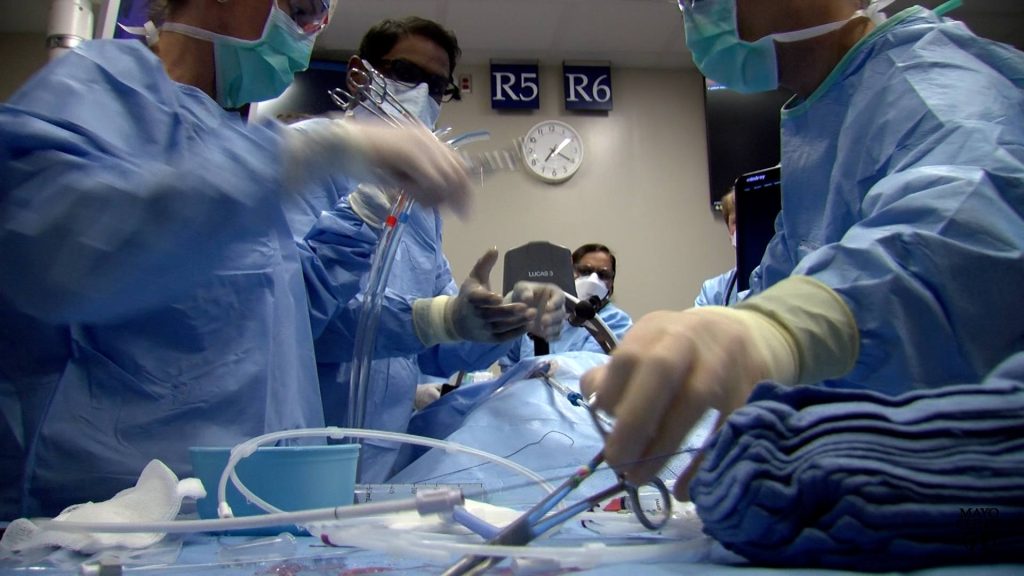-
Mayo Clinic teams with first responders to improve care for cardiac arrest patients

ROCHESTER, Minn. — Starting this month, local first responders and Mayo Clinic's Emergency Department will begin changing the way certain sudden cardiac arrest patients are treated, with the goal of saving more lives.
Mayo Clinic is leading an effort to help restore regular heart rhythm to patients in sudden cardiac arrest who do not respond to shocks to the heart. Rather than continuing to work on the patient on the emergency scene, Mayo Clinic Ambulance Service paramedics will assess whether the patient is a candidate for early access to extracorporeal membrane oxygenation (ECMO) – a machine that takes over heart and lung function.
If the answer is yes and crews can get to Mayo Clinic's Emergency Department within 30 minutes, the patient will be transported to the hospital. A recent study published in The Lancet found that, for certain sudden cardiac arrest patients, the odds of surviving increased by six times if patients had early access to ECMO and chest compressions, termed ECPR.
Watch: Katie Meyer and Dr. Philip Spencer talk about ECMO
Journalists: Broadcast-quality video is available in the downloads at the end of the post. Please courtesy: Mayo Clinic News Network. Name supers/CG: Katie Meyer/Paramedic/Mayo Clinic/Philip Spencer, M.D./Cardiovascular Surgery/Mayo Clinic.
"We are changing the way we deliver care to our out-of-hospital cardiac arrest patients. This is an innovative therapy that we are bringing to the people of Rochester and surrounding communities," says Alexander Finch, M.D., a Mayo Clinic emergency medicine physician who has helped lead this initiative.
More than 356,000 sudden cardiac arrests occur outside a hospital in the U.S. every year, according to the American Heart Association. Access to fast, appropriate medical care is critical for survival. February is also American Heart Month.
Only a handful of communities across the U.S. provide early access to ECPR. To prepare for this change, Mayo Clinic Ambulance Service staff participated in extensive training and drills. They also organized training for Rochester Fire Department first responders. New technology also has helped make this possible: Machines that safely provide CPR to patients in moving ambulances.
"This potentially lifesaving change in how we care for certain cardiac arrest patients in the Emergency Department would not have been possible without the full support of Mayo Clinic Ambulance Service and the Rochester Fire Department," says Anuradha Luke, M.D., medical director of Mayo Clinic Ambulance Service.
###
About Mayo Clinic
Mayo Clinic is a nonprofit organization committed to innovation in clinical practice, education and research, and providing compassion, expertise and answers to everyone who needs healing. Visit the Mayo Clinic News Network for additional Mayo Clinic news.
Media contact:
- Heather Carlson Kehren, Mayo Clinic Communications, newsbureau@mayo.edu
Related: Mayo Clinic to begin offering early ECMO to certain cardiac arrest patients
For the safety of its patients, staff and visitors, Mayo Clinic has strict masking policies in place. Anyone shown without a mask was either recorded prior to COVID-19 or recorded in an area not designated for patient care, where other safety protocols were followed.
Related Articles







